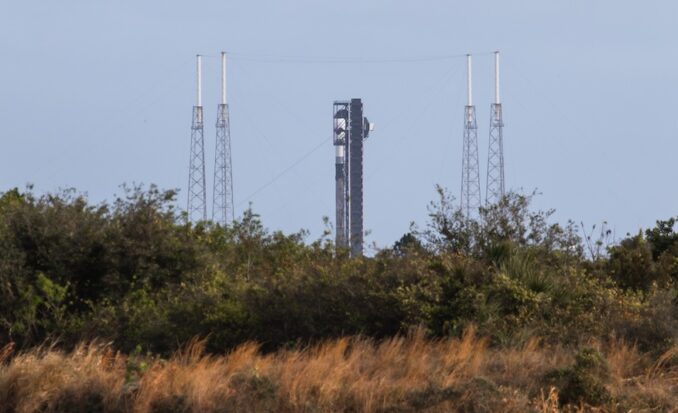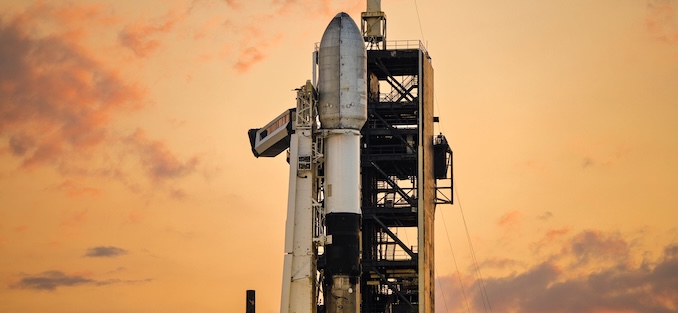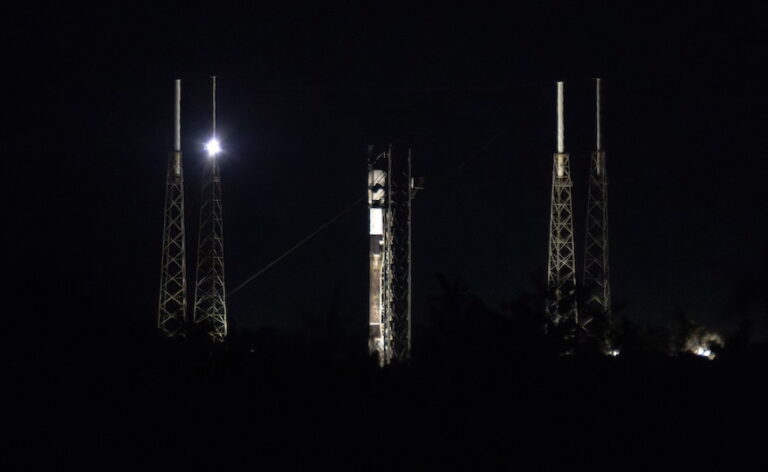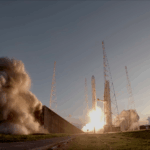Now Reading: SpaceX scrubs the RRT-1 launch from Cape Canaveral
-
01
SpaceX scrubs the RRT-1 launch from Cape Canaveral
SpaceX scrubs the RRT-1 launch from Cape Canaveral


Update 8:37 p.m. EST (0137 UTC): SpaceX cited high winds as the reason for the scrub of the launch of the RRT-1 mission.
SpaceX scrubbed the planned launch of a payload that has not been officially identified.
The mission, according to SpaceX and the FAA is being referred to as “RRT-1.” Liftoff from Space Launch Complex 40 (SLC-40) at Cape Canaveral Space Force Station was set for 8:05 p.m. EST (0105 UTC). In a statement posted to X, formerly Twitter, said “Teams will continue to keep a close eye on the weather as we work toward the next best launch opportunity.”
“A new target launch date will be shared once available,” SpaceX wrote.
On Thursday, the 45th Weather Squadron issued a launch weather forecast suggesting an 80 percent chance of acceptable weather for liftoff on Friday. Meteorologists listed liftoff winds and cumulus clouds as the primary concerns.
It also stated that the booster recovery weather was a “moderate” risk on a scale of low-moderate-high. If the launch slips to Saturday, the next available launch opportunity, the booster recovery weather becomes a “high” risk and the chance of favorable weather slips to 60 percent.
“Strong onshore flow with coastal showers will be the weather pattern for the launch and backup days after a cold front passed through yesterday,” launch weather officers wrote. “Behind the front, a very strong area of high pressure is building into the eastern US, creating a very tight pressure gradient through the end of the week and into the weekend.
“This will bring elevated east-northeasterly winds along with isolated coastal showers tomorrow evening.”
The Falcon 9 first stage booster supporting this mission, tail number B1085 in the SpaceX fleet, will launch for a fourth time. It previously supported the launches of Crew-9 as well as Starlink 10-5 and Starlink 6-77.
Roughly 8.5 minutes after liftoff, B1085 will touchdown on the SpaceX droneship, ‘A Shortfall of Gravitas.’ If successful, it will mark the 90th booster landing on ASOG and the 383rd booster landing to date.
Mystery payload
Prior to the launch, neither SpaceX nor the mission’s customer made a public statement about what payload was onboard the Friday night Falcon 9 flight.
Some speculated online that it was a third-generation Global Positioning System (GPS) satellite manufactured by Lockheed Martin. A point of rationale is the mission timeline for RRT-1 is strikingly similar to that of the last GPS 3 Space Vehicle to launch, GPS 3 SV06, which launched on Jan. 18, 2023.
Another data point is that the hazard warnings are also reminiscent of the SV06 launch.
And a fresh evidence supporting this idea is the launch timeline – it’s almost exactly the same as well (GPS III SV06 on the left, “RRT-1” on the right). pic.twitter.com/FqPVIdME7V
— Cosmic Penguin (@Cosmic_Penguin) December 13, 2024
However, the Falcon 9 second stage on this mission has a grey band around it, which is used to help regulate the temperature of the propellant on the upper stage. Typically, that’s used for missions with significantly long coast phases, like those launching on a direct to geostationary Earth orbit (GEO) or a highly-elliptical Earth orbit (HEO).
If the payload is a GPS satellite it would be destined for a medium Earth orbit (MEO) about 12,500 miles in altitude.
According to the list of National Security Space Launch (NSSL) Phase 2 contract launches assigned to SpaceX, the only ones named as GPS missions are GPS 3 SV10 and GPS 3 F-1, the latter of which is the next generation of GPS satellite and will launch on a Falcon Heavy.
If this is in fact a mission on behalf of the U.S. Space Force, SpaceX does have a number of other missions listed under this procurement process that haven’t launched. Those include USSF-36, USSF-31 and USSF-70.
The RRT-1 mission wasn’t brought up as a topic of discussion during the three-day Space Force Association’s Spacepower Conference, which wrapped up on Thursday.
GPS powers everything from power grids to emergency services. We’re evolving GPS to stay ahead—fortifying civilian infrastructure and military operations with advanced signals, jam resistance and more. Click to learn how GPS shapes our world:
— Lockheed Martin (@LockheedMartin) December 10, 2024
Stay Informed With the Latest & Most Important News
-
 012024 in Review: Highlights from NASA in Silicon Valley
012024 in Review: Highlights from NASA in Silicon Valley -
 02Panasonic Leica Summilux DG 15mm f/1.7 ASPH review
02Panasonic Leica Summilux DG 15mm f/1.7 ASPH review -
 03From Polymerization-Enabled Folding and Assembly to Chemical Evolution: Key Processes for Emergence of Functional Polymers in the Origin of Life
03From Polymerization-Enabled Folding and Assembly to Chemical Evolution: Key Processes for Emergence of Functional Polymers in the Origin of Life -
 04How New NASA, India Earth Satellite NISAR Will See Earth
04How New NASA, India Earth Satellite NISAR Will See Earth -
 05And Thus Begins A New Year For Life On Earth
05And Thus Begins A New Year For Life On Earth -
 06Astronomy Activation Ambassadors: A New Era
06Astronomy Activation Ambassadors: A New Era -
07SpaceX launch surge helps set new global launch record in 2024





















